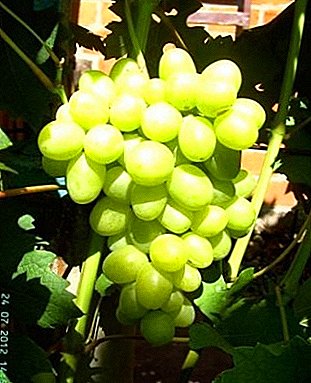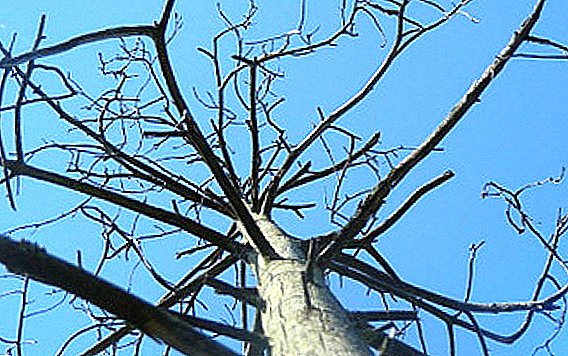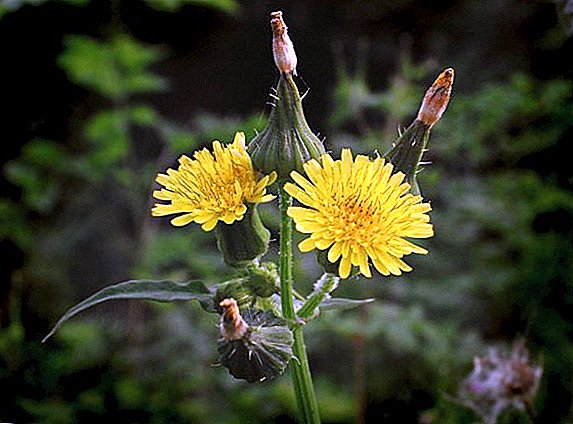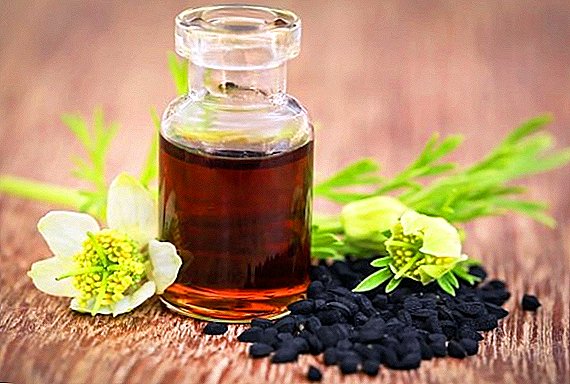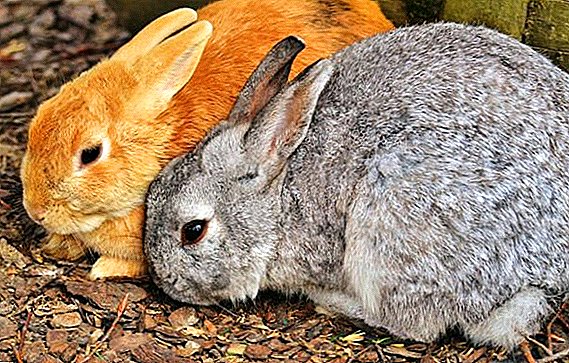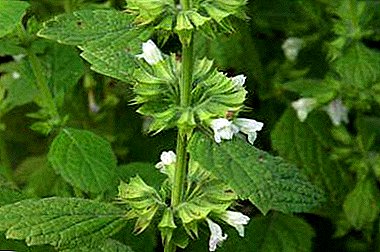
Pelargonium - a plant long loved by its unpretentiousness by many gardeners. There are many species and varieties of this flower. One of the brightest representatives is royal pelargonium, which is distinguished by the most lush flowering. She is also the most demanding of all. This article is about the care of royal pelargonium, as well as possible problems in its cultivation and ways to solve them.
Description and photo
The birthplace of this flower is South America, which is why it is very fond of a hot climate with high humidity. Royal Pelargonium is a bushy plant from 30 to 60 centimeters. Its distinguishing feature from other species is large inflorescences and unusual folded leaves. Flowers are large in the form of umbrellas, which are collected in the sphere.
Flower size can reach 7 cm. Flowers can be both simple and terry, from white to dark purple color. It depends on the type of plant. Also, the color of the petals can be multicolored. The foliage of this pelargonium also differs from other species. It is rather large, rough to the touch and has curly jagged edges.
Next you can see photos of royal pelargonium:





Necessary conditions for growing
- Air. In the period from March to August, the plant needs an air temperature of +25 degrees. This temperature is necessary for the best development of the flower. In autumn and winter, temperatures should not be higher than +20 degrees. The optimum temperature for a flower is + 17 ... +19 degrees.
- Shine. This variety loves light. Therefore, it should be grown in a well-lit place. However, in the summer hot days it is worth pritenyat, as direct sunlight can leave burns on the plant.
- Humidity. Requires high humidity for good growth and development of the flower. Royal Pelargonium needs frequent, regular and moderate watering. Watering is necessary in the morning and evening in the dosage of 50 ml per adult plant.
- Draft. You can not put a pot with a flower in a room where there are drafts. Pelargonium can die from them, since abrupt air currents harm it.
Planting and transplanting
The transplant procedure is carried out in the spring, when the roots are cramped in a pot. It is very easy to determine - they begin to manifest themselves through drainage holes. As a rule, this happens once every 2-3 years. Often replant the plant is not necessary. Frequent transplants can slow flowering..
- The first step is to select the capacity for transplanting. It should be small, since pelargonium does not willingly grow in large pots.Important! You need to pick up a container in which the roots are placed. New tank should have drainage holes.
- The next thing to look out for is a drain for transplant. In this capacity, you can use broken brick, sea pebbles or expanded clay.
 The next stage - the choice of soil. It is best to buy ready-made soil in a flower shop. And you can cook it yourself. To do this, take in equal parts:
The next stage - the choice of soil. It is best to buy ready-made soil in a flower shop. And you can cook it yourself. To do this, take in equal parts:- sand;
- peat;
- the earth.
- At the beginning of transplantation it is necessary to prepare a flower. To do this, it is taken from the previous pot and cleaned from the old soil by shaking it slightly.
- Put a drain on the bottom of the pot.
- Pour out the soil, making it a recess, in which then place a flower.
- Sprinkle with the rest of the soil. In this case, the planting mixture can not be heavily rammed.
- At the end of the procedure, water the plant and put it in a sunny place.
How to care?
Caring for pelargonium in the summer is somewhat different from winter.
In the summer
Summer care for a flower at home is not difficult. Since the flower is in a state of flowering, the care lies in the proper watering and feeding of the plant. Fertilizers must not contain nitrogen. In order for the bloom to last longer and the plant retains its decorative effect, it is necessary to remove faded flowers in a timely manner.
The temperature of the content should not fall below +22 degrees. If the temperature outside coincides with that required for pelargonium, then the flower can be brought to the street. When the temperature drops, the plant can get a bacterial or fungal disease. Do not allow temperature drops.
In winter
First of all, it is necessary to lower the temperature to + 10 ... +15 degrees. Also reduce watering and pinch bush. Watering is reduced to once in 10-14 days.
Watering and feeding
 Watering should be abundant, but without stagnant water. In the hot period, watered twice a day. In winter, watering is reduced. Watering is done at the root. Do not allow water droplets to fall on the leaves. From this spots appear on them. Therefore, spraying is not necessary for it.
Watering should be abundant, but without stagnant water. In the hot period, watered twice a day. In winter, watering is reduced. Watering is done at the root. Do not allow water droplets to fall on the leaves. From this spots appear on them. Therefore, spraying is not necessary for it.
Feed must be regular. In spring and summer, they feed the flower once every two weeks. Fertilizer should be mineral, consisting of magnesium, potassium, nitrogen. You can buy ready-made compositions, and you can mix your own while taking minerals in equal parts.
Before flowering, increase the composition of potassium and reduce or completely remove nitrogen fertilizers. Iodine is added to produce a large number of buds. 1 drop of iodine diluted per liter of water and pour this solution on the wall of the pot. One adult plant will need 50 ml of solution.
Possible problems
Does not bloom - why and what to do?
- One possible reason is big pot. The plant grows and increases the green mass, and it simply does not have enough strength to bloom. Therefore, it is necessary to transplant the flower in a smaller container.
- Same lack of rest also leads to the fact that the royal pelargonium does not bloom. In this case, it is worth reducing the watering in the fall and winter and stop feeding. In winter, keep the plant in a cool place.
- One more reason - pests or plant disease. It is necessary to examine the flower for their presence and, if it is found, take appropriate measures to save the flower.
Yellow leaves
This may occur due to care errors:
- Insufficient watering leads to yellowing of the leaves.
- If the plant has been exposed to sunlight for a long time, then its leaves will also turn yellow.
- Yellowing can also be caused by diseases, such as black rot, rust. For treatment use special drugs.
Diseases
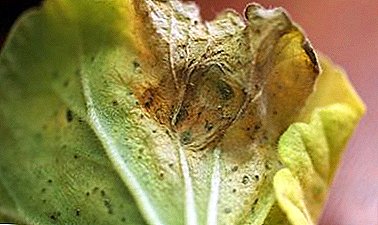 Gray rot - develops due to an overabundance of moisture and a high nitrogen content in the soil. Manifested by brown spots on the leaves and stems, gray bloom on the flower. For treatment, the plant is transplanted into a new soil and treated with fungicidal agents.
Gray rot - develops due to an overabundance of moisture and a high nitrogen content in the soil. Manifested by brown spots on the leaves and stems, gray bloom on the flower. For treatment, the plant is transplanted into a new soil and treated with fungicidal agents.- Root and stem rot - the root neck becomes black and begins to rot, the leaves turn pale, turn yellow and fade. The reason - an excess of moisture and low acidity of the soil. To combat rot use drugs Biporam, or Fitolavin.
- Late blight - defeat by a fungus from which the plant withers and rots. There is a disease due to high humidity. From her leaves become pale, and the flower slows its growth. In places of rot white fluff may form. It is necessary to treat the plant Bordeaux liquid. The damaged parts are removed, the cutting sites are treated with charcoal, and the plant is transplanted into a new soil.
- Eden - the formation of tubercles and growths on the leaves. It also occurs due to waterlogging. Damaged leaves are cut, and watering is reduced.
- Verticillary wilting - the most dangerous disease. Infected plant to be destroyed. If the first signs of the disease appear on the shoots, they should be cut and the flower treated with biofungicide.
Pests
- Aphid.
- Ticks.
- Termites.
- Caterpillars
- Whitefly.
To control pests using different insecticidal drugs. Aspirin will also help. For this, an aspirin tablet dissolves in 8 liters of water and the plant is treated with this solution. It is necessary to make such processing time in three weeks.
So you got acquainted with the basic rules for the care of royal pelargonium. She, of course, is more picky in care than her other relatives, but her luxurious appearance will not leave you indifferent despite the slight difficulties in caring for her.


 The next stage - the choice of soil. It is best to buy ready-made soil in a flower shop. And you can cook it yourself. To do this, take in equal parts:
The next stage - the choice of soil. It is best to buy ready-made soil in a flower shop. And you can cook it yourself. To do this, take in equal parts: Gray rot - develops due to an overabundance of moisture and a high nitrogen content in the soil. Manifested by brown spots on the leaves and stems, gray bloom on the flower. For treatment, the plant is transplanted into a new soil and treated with fungicidal agents.
Gray rot - develops due to an overabundance of moisture and a high nitrogen content in the soil. Manifested by brown spots on the leaves and stems, gray bloom on the flower. For treatment, the plant is transplanted into a new soil and treated with fungicidal agents.
